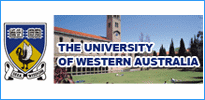Canada: Canada Education Profile 2012
2012/02/28
Canada Education Profile 2012
Public education in Canada is the responsibility of the provincial governments, with each province having a department of education or its equivalent. Provinces delegate some responsibility to local school boards. There are also territorial departments of education. The federal government provides financial support for postsecondary education. It also directly administers special schools, such as those for Indian children on the reserves, Inuit in the territories, armed forces personnel and their families, and inmates of federal prisons. There are few private schools on the elementary and secondary levels.
School attendance is compulsory from age 6 (or 7 in some provinces) to age 15 (or 16). In general, education is free through secondary school. The elementary-secondary program covers 12 years. The public schools are operated by local school boards guided by provincial laws. In Quebec, school boards are generally organized by language of instruction—French or English. Most provinces have small numbers of private schools with their own school boards. Most of these schools are Roman Catholic. Private schools must provide programs that meet provincial standards. Several provinces provide financial support to private schools.
Canada has more than 270 institutions of higher learning, including universities and community colleges. Control is either private or provincial. Among the largest are the universities of Toronto, Montreal, British Columbia (in Vancouver), and Alberta (in Edmonton), Laval University in Quebec City, McGill University in Montreal, and York University in North York, Ontario. The community colleges offer two years of postsecondary education and technical training. In addition, vocational education is provided at technology institutes and at trade and business schools. Adult education courses are offered by universities, colleges, local boards of education, and business and professional associations.
The literacy rate is high in Canada; about 97 per cent of the adult population is able to read and write.
- Canada News
-
- AFGHANISTAN: UNWTO: International tourism – strongest half-year results since 2010
- CANADA: Equifax says hack potentially exposed details of 143 million consumers
- CANADA: U.S. trade rep says in NAFTA talks he keeps Trump's views in mind
- CANADA: Why Mexico, Canada can discount Trump’s remarks on NAFTA?
- BRAZIL: Brazil' Gov't Calls For WTO Panel Against Canadian Subsidies To Bombardier
- CANADA: Canadian subsidiary of French defence giant gets $5.2 billion contract
- Trending Articles
-
- BOTSWANA: Africa: U.S. State Department To Get Experienced Diplomat in Key Africa Post
- BURUNDI: Burundi: Govt Rejects UN Accusations of Crimes Against Humanity
- CHINA: China Invites 5 Countries As Guests For BRICS Summit
- ARUBA: Director of Tourism Turks and Caicos after Irma: Tourism, visitors, hotels current status
- IRAN: Saudi Arabia denies warming relations with Iran
- ISRAEL: Finance Ministry: Housing market slower in July













